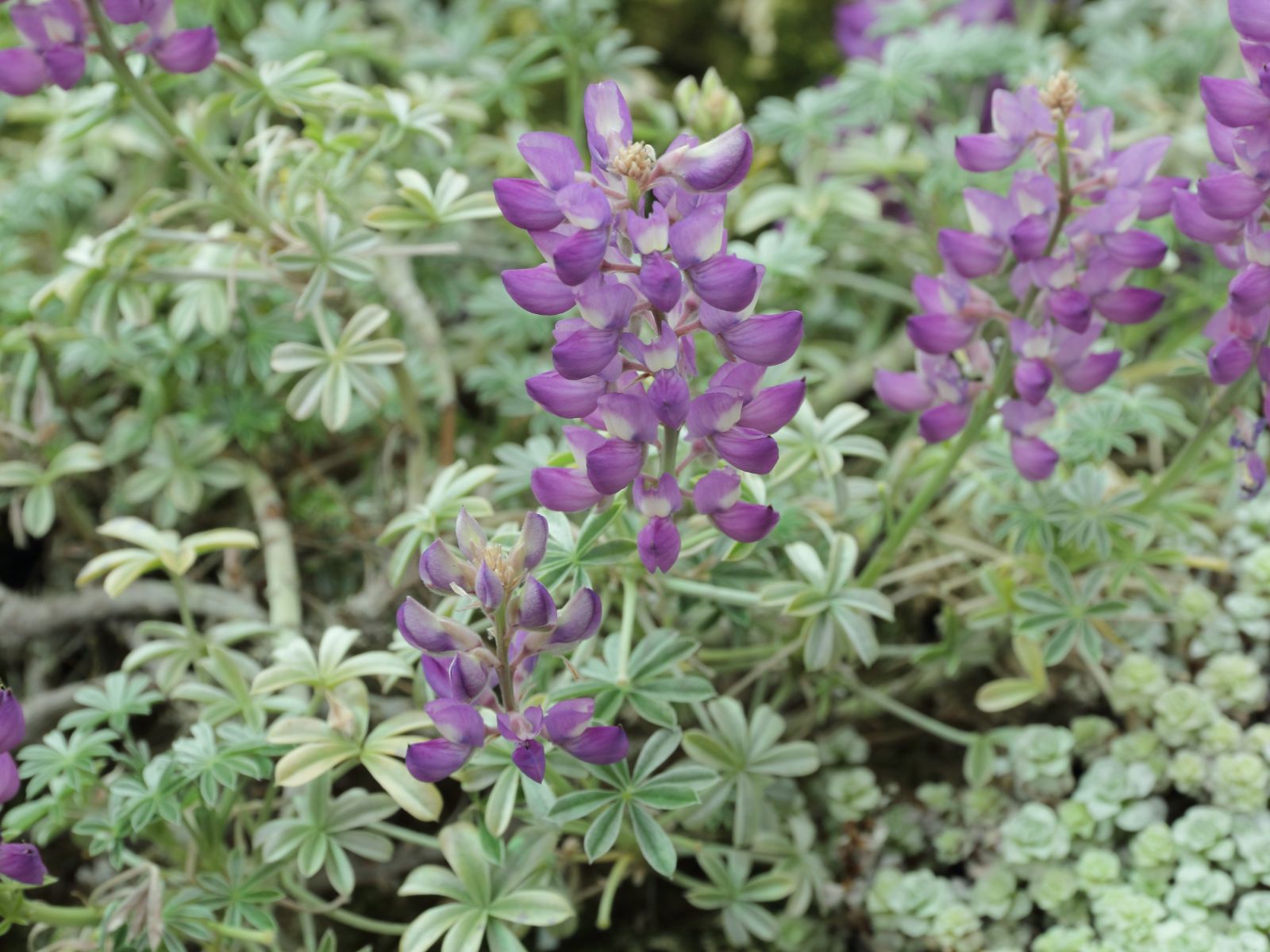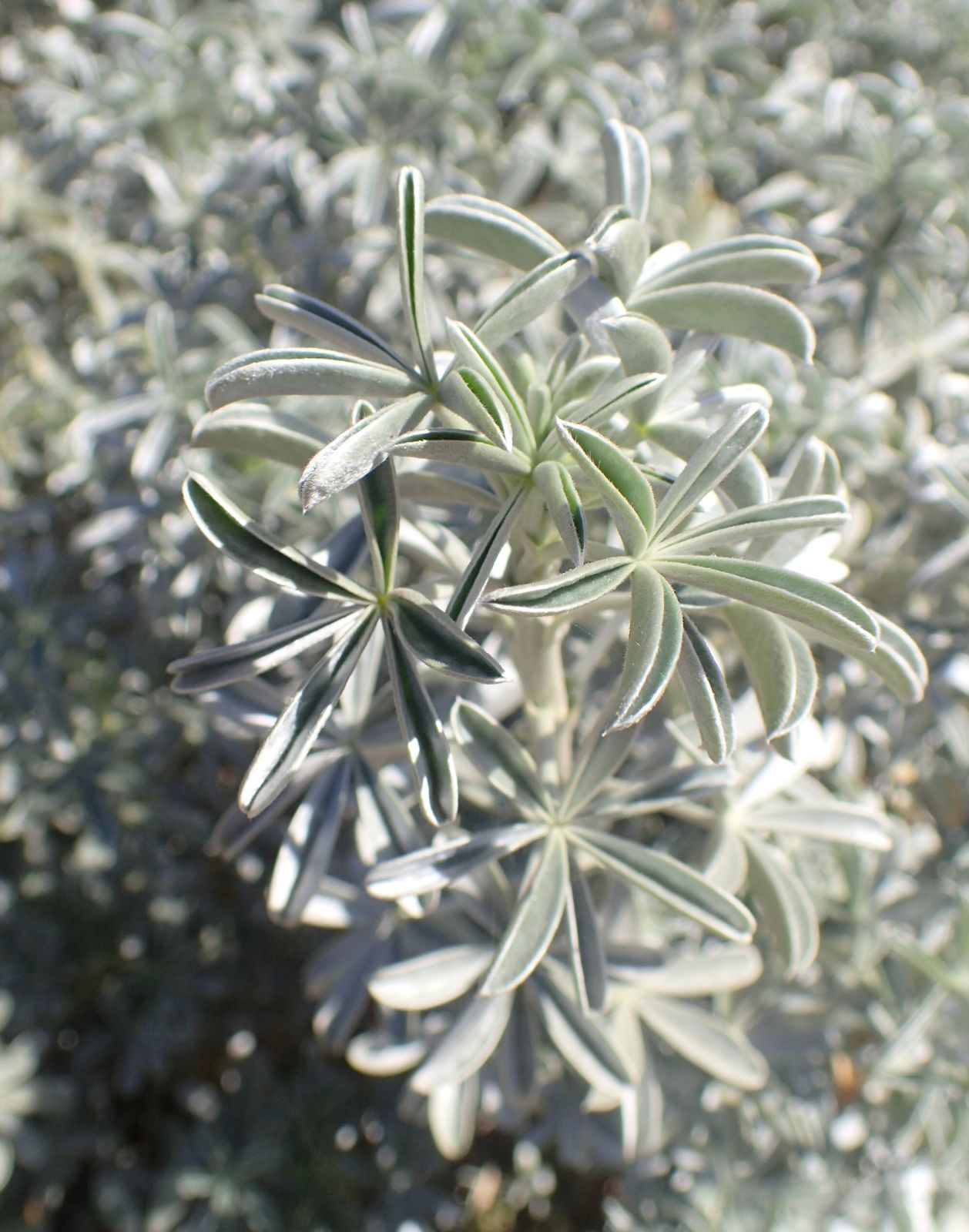Lupinus albifrons
Sponsor
Kindly sponsored by a member of the International Dendrology Society.
Credits
Julian Sutton (2023)
Recommended citation
Sutton, J. (2023), 'Lupinus albifrons' from the website Trees and Shrubs Online (treesandshrubsonline.
Genus
Common Names
- Silver Lupine
Shrub or subshrub to 50 cm, hairy, silvery to green. Stems decumbent, ascending or erect. Leaves cauline, sometimes clustered near base; leaflets 6–10, 10–45 × 3–10 mm, linear-elliptic to oblanceolate, tips acute, usually apiculate; both surfaces silky hairy; petioles 1–8 cm; stipules 6–20 mm. Inflorescence 4–40 cm, flowers not or only loosely whorled. Flowers 10–18 mm; calyx upper lip 6–8 mm, deeply divided; lower lip 6–10 mm, entire to 3-toothed; petals violet to lavender, banner with yellow or white spot which ages purple. Fruit 3–5 cm, hairy. (Sholars & Riggins 2022; OregonFlora 2023).
Distribution Mexico NW United States California, Oregon
Habitat Dry slopes, chaparral, open woods, cliffs, desert scrub and washes; 0–3000 m asl.
USDA Hardiness Zone 9-10
RHS Hardiness Rating H3
Conservation status Not evaluated (NE)
This shrubby lupin, beautifully silver-hairy in its most desirable forms, is sometimes seen in Californian gardens and nurseries, but much more rarely in Europe. Largely an inland plant (the other species we describe are coastal), it requires full sun and a poor, well-drained, preferably downright dry soil. Given all these it can be long-lived in California (California Native Plant Society 2023). Where conditions are suboptimal (which must surely include anywhere without a Mediterranean climate) it is safest to save seed and renew plants frequently.
Its flowers show an interesting colour change as they age, which is accelerated by pollination. The banner spot begins pale (white or yellow) but ages purple: the pale spot may act as a signal to pollinators that a flower is young and unpollinated (Stead & Reid 1990)
Lupinus albifrons shows bewildering variation, both in morphology and ecology. Many varieties have been described, and the boundary between this species and L. excubitus is not universally agreed (for more details of varieties see Sholars & Riggins 2022). Huang’s (2010) description of the entire complex as a ‘rapidly diversifying species flock’ is telling; no gardener is likely to make much sense of it.



